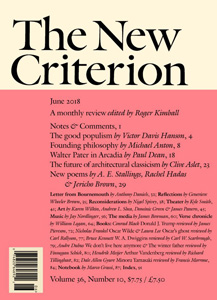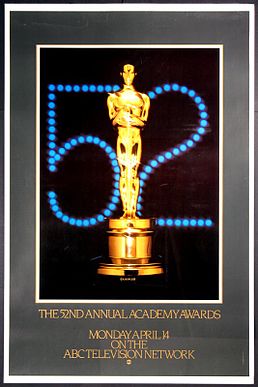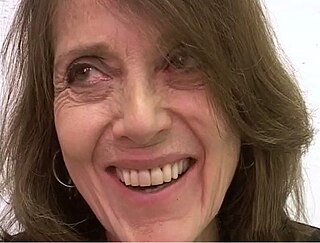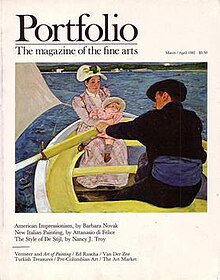
GQ is an international monthly men's magazine based in New York City and founded in 1931. The publication focuses on fashion, style, and culture for men, though articles on food, movies, fitness, sex, music, travel, celebrities' sports, technology, and books are also featured.

The New Criterion is a New York–based monthly literary magazine and journal of artistic and cultural criticism, edited by Roger Kimball and James Panero. It has sections for criticism of poetry, theater, art, music, the media, and books. It was founded in 1982 by Hilton Kramer, former art critic for The New York Times, and Samuel Lipman, a pianist and music critic. The name is a reference to The Criterion, a British literary magazine edited by T. S. Eliot from 1922 to 1939.
Hilton Kramer was an American art critic and essayist.

Aperture magazine, based in New York City, is an international quarterly journal specializing in photography. Founded in 1952, Aperture magazine is the flagship publication of Aperture Foundation.

Art & Antiques is an American arts magazine.

American Heritage is a magazine dedicated to covering the history of the United States for a mainstream readership. Until 2007, the magazine was published by Forbes. Since that time, Edwin S. Grosvenor has been its editor and publisher. Print publication was suspended early in 2013, but the magazine relaunched in digital format with the Summer 2017 issue after a Kickstarter campaign raised $31,203 from 587 backers. The 70th Anniversary issue of the magazine on the subject "What Makes America Great?" includes essays by such historians as Fergus Bordewich, Douglas Brinkley, Joseph Ellis, and David S. Reynolds.
The Comic Art Convention (CAC) was an American comic book fan convention held annually New York City, New York, over Independence Day weekend from 1968 through 1983, except for 1977, when it was held in Philadelphia, Pennsylvania, and 1978 to 1979, when editions of the convention were held in both New York and Philadelphia. The first large-scale comics convention, and one of the largest gatherings of its kind until the Comic-Con International in San Diego, California, it grew into a major trade and fan convention. It was founded by Phil Seuling, a Brooklyn, New York City, teacher, who later developed the concept of comic-book direct marketing, which led to the rise to the modern comic book store.

The 52nd Academy Awards ceremony, organized by the Academy of Motion Picture Arts and Sciences (AMPAS), honored films released in 1979 and took place on April 14, 1980, at the Dorothy Chandler Pavilion in Los Angeles, beginning at 6:00 p.m. PST / 9:00 p.m. EST. During the ceremony, AMPAS presented Academy Awards in 22 categories. The ceremony, televised in the United States by ABC, was produced by Howard W. Koch and directed by Marty Pasetta. Comedian and talk show host Johnny Carson hosted the show for the second consecutive year. Three days earlier, in a ceremony held at The Beverly Hilton in Beverly Hills, California, on April 11, the Academy Scientific and Technical Awards were presented by hosts Cloris Leachman and William Shatner.
Melville Bell Grosvenor was the president of the National Geographic Society and editor of The National Geographic Magazine from 1957 to 1967. He was the grandson of telephone inventor Alexander Graham Bell.

Pat Lipsky is an American painter associated with Lyrical Abstraction and Color Field Painting.

From Bauhaus to Our House is a 1981 narrative of Modern architecture, written by Tom Wolfe.

Edwin S. Grosvenor is a writer, photographer, and President and Editor-in-Chief of American Heritage. He has published nine books and is best known for writing on his great-grandfather, Alexander Graham Bell, including two books and several magazine articles. Early in his career, Grosvenor worked as a freelance photographer for National Geographic, completing 23 assignments. He has been interviewed on History Channel, CBS News Sunday Morning, AARP Radio, AP Radio, CBC, NBC Radio Network, NPR, and Voice of America, and has lectured at the Smithsonian Institution, Boston Museum of Science, and other venues.
Stanley Richard Jaffe is an American film producer, responsible for movies such as Fatal Attraction, The Accused, and Kramer vs. Kramer.
Artists’ Choice Museum in New York City was started in 1976 by many of the same younger artists who were active in the Alliance of Figurative Artists and the Figurative Coops. The first exhibition, a survey of 146 contemporary figurative artists was selected and organized by the artists of the Green Mountain, Bowery, Prince Street, and First Street Galleries - although it was a broad survey and did not exhibit just artists from those galleries. After the first show older artists were brought into its structure. Other group shows followed in clusters of galleries on 57th street and in museums: “Benefit Exhibit” in 1979, “Younger Artists: Benefit Exhibit” in 1980, “Intimate Visions” in 1982, “Narrative Sculpture” in 1982, “Painted Light” in 1983 and “Bodies and Souls” in 1983 to name some. By 1980 The Museum was publishing a bimonthly newsletter and by 1982 a magazine. By 1984 the Museum finally had a home; a building on West Broadway. This space only lasted until 1986 when the organization ceased to exist.

Kenneth Tucker is an American arts, music and television critic, magazine editor, and nonfiction book author.
Carol Diehl is an American artist, art critic and poet. In addition to her writing, most recently appearing in her blog Art Vent, she is best known for her paintings, which have often documented daily life in a manner described as diaristic, even compulsive, using dense, painterly, often indecipherable words, numbers and symbols in grid or geometric frameworks. Diehl has also been a prolific art critic, having contributed features and reviews to numerous periodicals, including Art in America, ARTnews, and Art + Auction, as well as to books and artist catalogues. In the 1990s, she became active in New York's performance poetry scene. Diehl lives in New York City and southwestern Massachusetts. She has two sons, Matt Diehl and Adam Diehl.

Thornton Willis is an American abstract painter. He has contributed to the New York School of painting since the late 1960s. Viewed as a member of the Third Generation of American Abstract Expressionists, his work is associated with Abstract Expressionism, Lyrical Abstraction, Process Art, Postminimalism, Bio-morphic Cubism and Color Field painting.

Earl Alexander Powell III, nicknamed Rusty Powell, is an American art historian and museum director. From 1980 to 1992, he was Director of the Los Angeles County Museum of Art. He was appointed Director of the National Gallery of Art in Washington, D.C., in September 1992. The Gallery announced in November 2017 that Powell would step down in 2019. He was appointed to the U.S. Commission of Fine Arts in 2003 and elected Chair in 2005. He was appointed to a second four-year term on August 30, 2012, and continues to serve as Chair.

Tom Goldenberg is an American artist, best known for landscape and abstract paintings. He has shown throughout the United States and internationally, and his work has been covered by The New York Times, The New Criterion, Art in America, Arts Magazine, Art & Antiques, and The New York Observer, among other publications. Critics often note his landscape works for their contemporary interplay of stylization and observation and concern for form over verisimilitude, pointing to his beginnings in abstraction as a foundation that underlies his ordered pictorial structures. In the later 2010s, Goldenberg has returned to abstraction that sometimes suggests interior or "fictive" landscapes. The New Criterion editor and writer Roger Kimball described his paintings as leading "double lives, as memorable evocations of rural landscape and tightly organized arrangements of abstract planes of color." Hilton Kramer characterized his work as "deeply mediated by aesthetic reflection" and classical rather than romantic in feeling. Goldenberg and his wife, Michelle Alfandari, have lived in Sharon, Connecticut since 2016, after being based in New York City since the 1970s.
Ten Portraits of Jews of the Twentieth Century is a 1980 series of ten paintings by Andy Warhol. The series consists of ten silk-screened canvases, each 40 by 40 inches. Five editions of the series were made. The series was also produced by Warhol as a portfolio of screenprints on Lenox museum board comprising editions of 200, 30 Artist Proofs, 5 Printers Proofs, 3 EPs, and 25 unique Trial Proofs.













